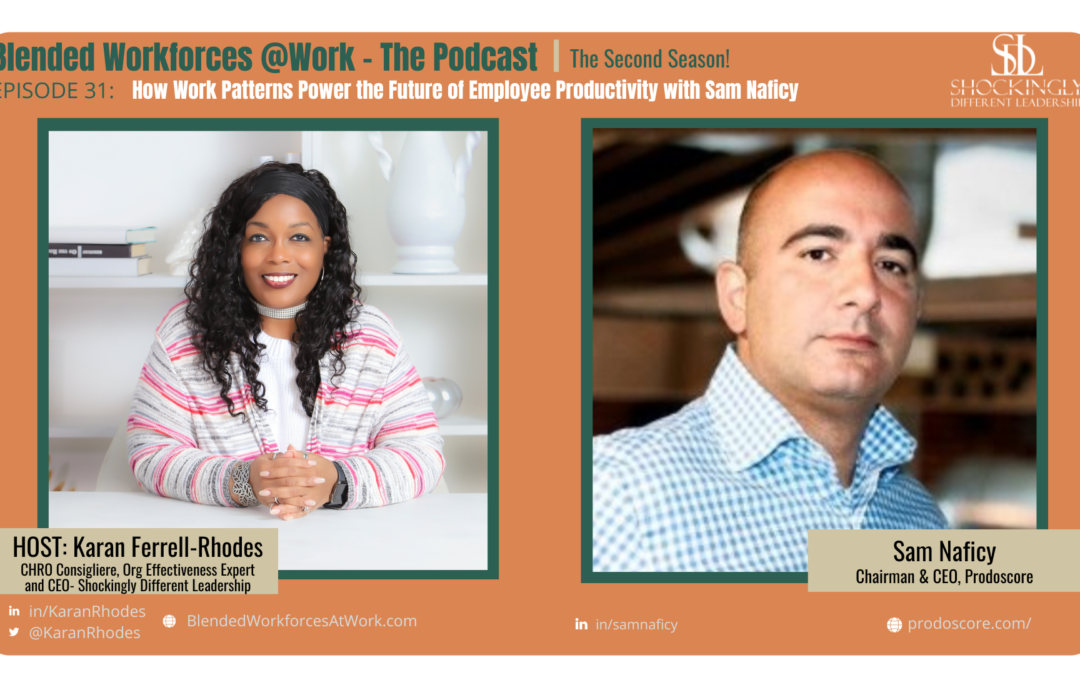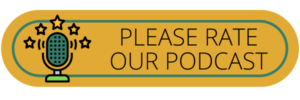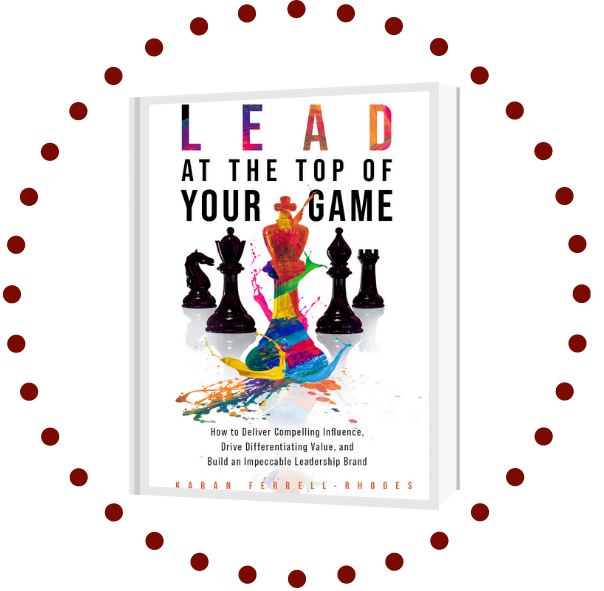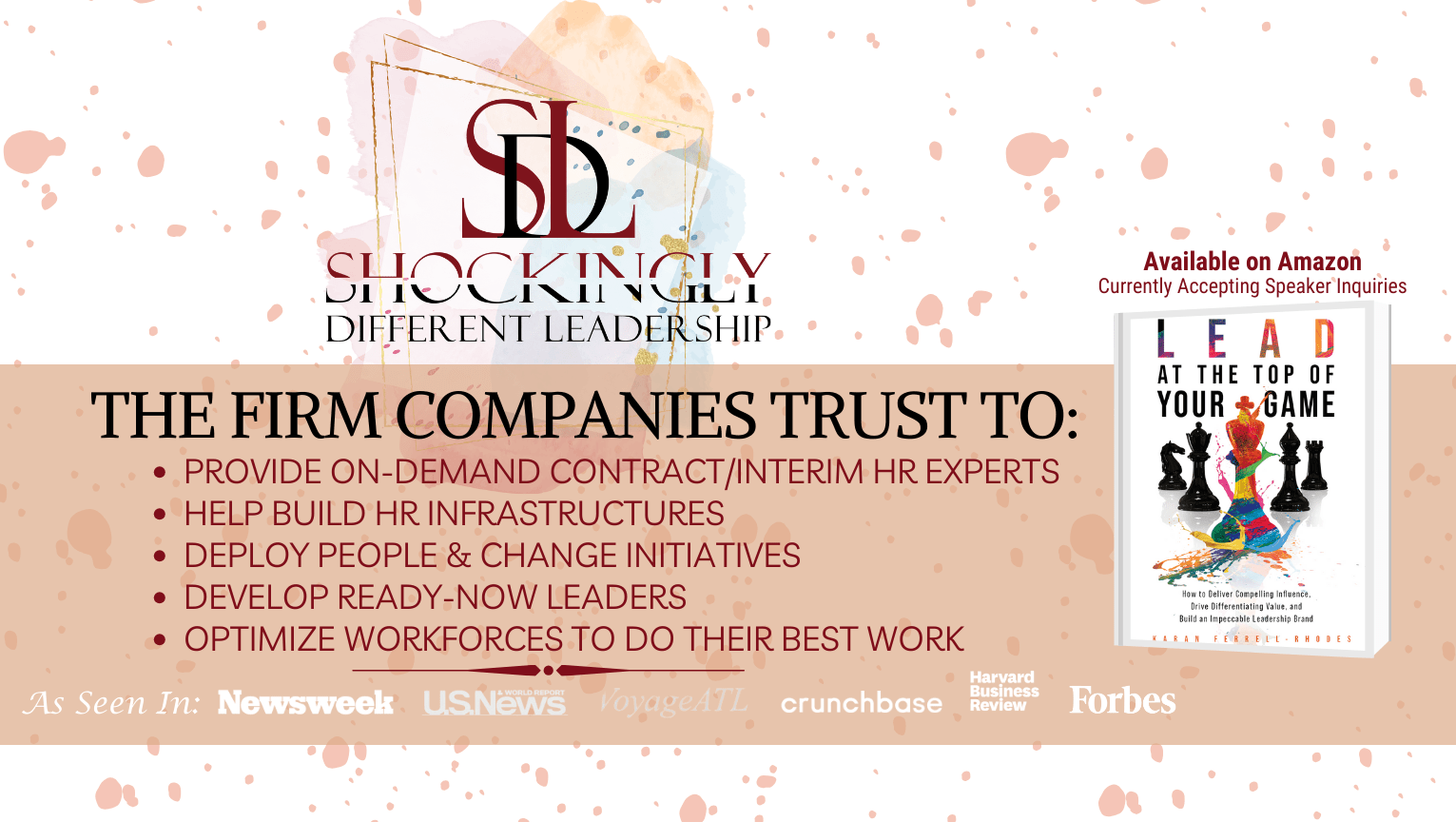IN THIS EPISODE, KARAN FERRELL-RHODES INTERVIEWS SAM NAFICY.
Sam Naficy shares insights into how his AI-powered platform optimizes employee productivity by analyzing data from cloud tools like email, CRM, and chat applications. He addresses cultural concerns, emphasizing Prodoscore’s employee-centric approach and business benefits, such as performance insights and fair evaluations.
The discussion also explores Prodoscore’s role in organizational network analysis, potential applications in education, and the importance of strategic decision-making for startups and middle-market companies to drive growth and efficiency.
Sam Naficy is the Chairman and CEO of Prodoscore Inc. An employee productivity and data visualization startup (Prodoscore.com). In addition to running Prodoscore, he is the Chairman of SNK Capital Partners, the Naficy Family Office.
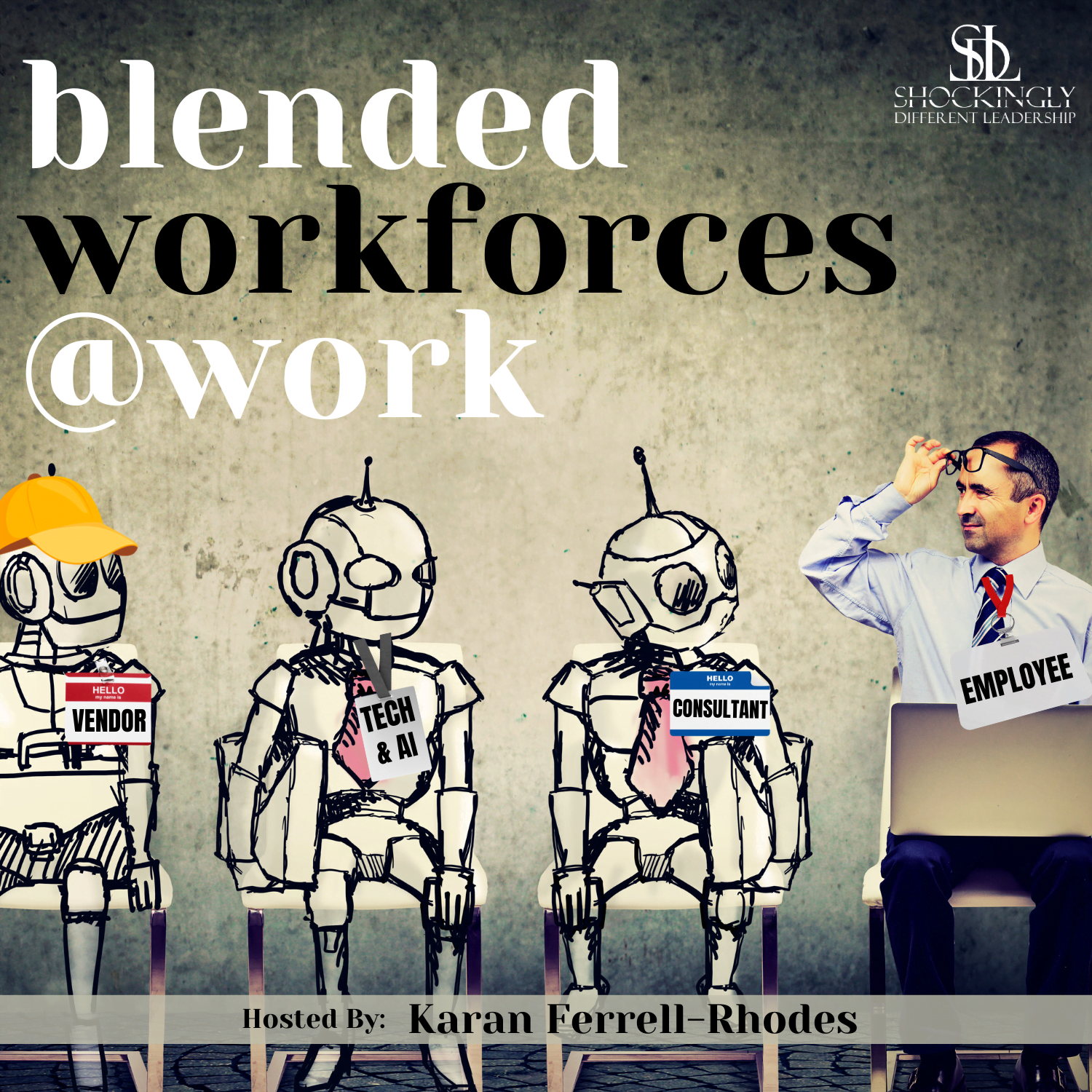
Posted by
SDL Media Team
Rather view our video podcast?
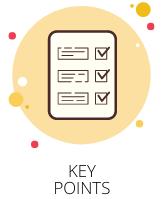
WHAT TO LISTEN FOR:
- What is the mission of Prodoscore?
- How does Prodoscore capture employee productivity data?
- Why is employee productivity tracking different from the early days of CRM?
- What cultural objections exist to Prodoscore, and how are they addressed?
- Who are the primary customers of Prodoscore?
- How does Prodoscore assist with performance and compensation decisions?
- Which major organizations use Prodoscore?
- What future features are planned for Prodoscore?
- How is Prodoscore used for organizational network analysis?
- What key strategic decision-making principles should young CEOs follow?
“Employee Productivity is the Next CRM Category.”
FEATURED TIMESTAMPS:
[03:33] Sam’s Personal Background
[06:09] Prodoscore’s Mission and Technology
[10:13] Employee and Employer Benefits of Prodoscore
[12:38] Target Market and Use Cases
[15:25] Signature Segment: Sam’s entry into the LATTOYG Playbook: Future Plans and Market Expansion
[19:59] Organizational Network Analysis and Additional Applications
[25:10] Signature Segment: Sam’s LATTOYG Tactic of Choice: Leading with Strategic Decision Making
[26:35] Contact Information
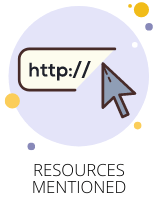
ABOUT SAM NAFICY:
Sam Naficy is currently the Chairman and CEO of Prodoscore Inc., An employee productivity and data visualization startup (Prodoscore.com). In addition to running Prodoscore, he is the Chairman of SNK Capital Partners, the Naficy Family Office. He also runs a biotech hedge fund focused on early-stage middle-market biotechnology companies.
Before joining Prodoscore, Sam was Chairman and CEO of DTiQ, a company he founded in 1998. Today, DtiQ is the world’s leading provider of intelligent video-based surveillance and loss prevention services, with over 65,000 customers and $50M in ARR.
LINKS FOR SAM:
- Website: prodoscore.com/
- LinkedIn: linkedin.com/in/samnaficy
ADDITIONAL RESOURCES FOR YOU:
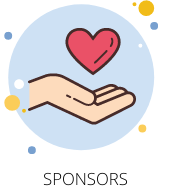
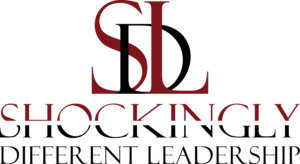
Episode Sponsor
SDL is the go-to firm companies trust when needing to:
- supplement their in-house HR teams with contract or interim HR experts
- implement leadership development programs that demonstrate an immediate ROI and impact on the business
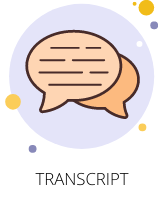
Episode 31 | How Work Patterns Power the Future of Employee Productivity with Sam Naficy
Sam Naficy 00:00
And because we have so much data between email and slack and chat and all of that productivity tool, we’re able to show a full network kind of collaboration metrics of an organization. So for example, historically, when. Companies have riffs or they want to let go of a group of people, let’s say they fire Sam. Okay, they save Sam salary. But what’s the repercussions in the organization? What happens to the people that Sam is connected to?
Karan Rhodes 00:03
Blended workforces are one of the hottest talent strategies today, where employers are using a mix of traditional employees with external resources like independent contractors, coaches, consultants, vendors, and technology solutions, all in order to enhance competitiveness, ensure cost flexibility, and expedite business goals. But how are the successful companies infusing blended workforces into their business strategy? And what are the critical success factors and pitfalls to avoid during implementation? And on the flip side, what does it really take for suppliers to improve their chances of finding and landing contract opportunities? The devil is in the details, my friends! I’m your host, Karan Ferrell Rhodes, and it’s time to get smarter about Blended Workforces at Work!Hello, my superstars. Welcome back to another episode of the blended workforces at work podcast. We have a tremendous guest in store for you today, who, gosh, I cannot even start to explain the impact that he and his company are making, but I’m going to at least give it a try, to give you a high level overview, but then we’re going to go deep in conversation with our guests, and You will not want to miss his insight. We’re absolutely thrilled to feature Sam Nafici, and hopefully I didn’t murder his last name, but it’s Nafisi. He is the chairman and CEO of proto score, which is an AI powered data intelligence technology solution that provides visibility into optimal employee productivity. I don’t know how he has enough time to do all of that and still have a smile on his face, but I admire him for doing so. So welcome to the show, Sam.
Sam Naficy 01:52
Thanks for having me. Good afternoon.
Karan Rhodes 01:53
Oh, wonderful. Thank you so much for the gift of your time. I can’t wait to learn more about the company and the reason why I was absolutely passionate about having you on the podcast is because you touch a little bit of all three efforts of the blended workforces equation. You have your your company has a technology number one, and we know technology is part of our equation for Brenda blended workforces that helps analyze employee productivity and employee productivity touches your full time employees that are working at employers. And then you’re also a vendor, supplier of the services to clients as well. So you have your toes dipped in all three puddles of the water there, and so we’re going to be fascinated to learn more about you and the company. But before we dive deep, we always love to know just a little bit about our guests. So for just as much as you feel comfortable, would you mind giving us a sneak peek into your life outside of work.
Sam Naficy 03:01
Wow, good question to start us off with. Thank you. Look, I don’t have much of a filter, so and I’m very transparent. My life changed dramatically nine years ago and I became a widower, and having lost my wife and then having, at the time, two young children, it completely transformed my view of life and dedicated the rest of my life to the kids. And kind of the focus changed, right? The focus of a young Sam and his legacy was all about career driven and resume building, and now this old, 52 year old is all about the legacy we leave in our children, right? Well, I’m gone, no one’s going to talk about my funeral, about my resume. The only thing they’ll talk about is the friends I had and the kids I left. Absolutely That to me is the evolution of Sam over the last 10 years.
Karan Rhodes 03:55
Oh, amazing. I’m so sorry for the hear of your loss, but I do appreciate your refocus to your family and friends, and how important that is in creating the legacy that you want to leave. And that’s so courageous, I must say, thank you. Thank you for sharing that I don’t have a filter either, as you’ll may have already guessed by my life’s an open book, but thank you so much for sharing that tidbit, and that will give others hope as well who are in similar type of life changing situations, right? So can we start out, Sam by you sharing, just at a very high level, a little bit about your background before proto score, and then how you ended up becoming chairman and CEO of proto score.
Sam Naficy 04:40
Great. No, I appreciate that. I’m the classic immigrant story. Came to America 40 years ago, kind of a serial entrepreneur, multiple failures and setbacks, like we’ve all had, if you’ve been trying hard enough, you’re going to have setbacks.
Karan Rhodes 04:55
Yeah,
Sam Naficy 04:55
I was fortunate enough to start another company in ’98 and. And that grew and did very, very well. We had a very fortunate outcome there in the SAS space as well. It created a new category in the hospitality restaurant space, very, very similar and analogous to what we’re doing at proto score. I exited for a few years because of the family situation I mentioned earlier, and then kind of began my involvement with proto score as an investor initially, and then been running the firm for the last three years.
Karan Rhodes 05:27
Oh, amazing. For our listeners, because I know I did not do it near justice. KENNETH share, in layman’s terms, exactly what proto score does and how it services its clients. Great
Sam Naficy 05:38
At a high level, we’re a data analytics company that captures all of the data points used by employees during their workday from all the cloud tools they’re using, for example, email, CRM, telephony, chat, Slack, all the tools that an employee uses. We capture all those data points and then use AI machine learning to provide analytics surrounded for better productivity for them and the employer,
Karan Rhodes 06:07
And usually, most companies have a variety of tech platforms that they are using internally. So how does proto score integrate with all of those to be able to analyze, use to provide the data that is needed for employers to make, you know, critical decisions?
Sam Naficy 06:28
So, before I answer that, let me take a step back and analogize the category. So employee productivity, broadly defined as a category, is a very, very new one in its nascents,
Karan Rhodes 06:41
Yeah.
Sam Naficy 06:41
And I analogized it to what CRM was 25 years ago. It was a completely new category. Nobody had heard of it.
Karan Rhodes 06:49
Yeah.
Sam Naficy 06:49
Sales people would use their Excel sheets or a notepad
Karan Rhodes 06:53
I remember
Sam Naficy 06:53
To keep their pipeline and with CRM tools and obviously Salesforce being the dominant elephant player in that space. When they came on about sales, people were mortified, oh, my God, what do you do to me? You’re micromanaging me. Leave me alone. And then as soon as they got familiar with it, they adopted it, and they saw how it benefited them. And CRM became a massive category, and it’s now in every single company out there, there’s a CRM tool.
Karan Rhodes 07:22
Yes,
Sam Naficy 07:23
If you fast forward six years ago, if I told you we would be recording phone calls of salespeople giving them next indicated steps of what to do, you would have said impossible. Gong is now a multi billion dollar business that’s flourished, and sales people love it.
Karan Rhodes 07:41
Yep
Sam Naficy 07:42
Employee productivity, I believe, is the next CRM category, broadly defined. I think we will take a sliver of that. I’m not trying to be arrogant and say it’s going to be us. There’ll be many winners, as the TAM is very large, but I think we’re going to be hopefully successful enough in taking a sliver of that tab.
Karan Rhodes 08:02
And, you know, I remember that. I don’t know if you know, but I worked for Microsoft for almost 14 years, and I remember the Excel days, or the note taking days, and they were, that’s how sales people wrote their contracts and got their bag, and it was almost didn’t take any skills, sales skills back then, because that’s what was the hot thing was, you know, Microsoft Office at the time. But once CRMs were introduced, the sales people were they did not, not only didn’t want it, they thought it was an invasion of privacy in a to an extent. And I’m curious, do you ever get something similar with Prodoscore when you first introduce it into companies that employees are a little aghast about getting tracked as that?
Sam Naficy 08:48
Absolutely so. Our biggest objection has always been culture. What will my employees think of this? And it was pronounced three years ago, a lot less two years ago, a lot less now, and part of it is because we’re one of the few, if not the only, one that is very employee centric. So the employee gets their own dashboard in proto score, they see how they’re doing vis a vis either peers in their own or in their own team. So we’re not some kind of a punitive software that is measuring your mouse clicks, your URLs, your keystrokes, none of that. We’re only capturing activity around your email address.
Karan Rhodes 09:31
And how do you recommend employers and employees use this data? I mean, for what type of change? What would be the ROI for them?
Sam Naficy 09:41
So I can spend the next two hours on ROI, but I’ll give you a couple of examples.
Karan Rhodes 09:47
Okay, fair enough.
Sam Naficy 09:48
So, we capture all the data points that come in, and as our baseline provide a score. So we say Sam is a 60, John is a 50, Jeff is a 70. And the in the exact same role. So we’re only comparing people that are within the exact same role, sales, with sales, operations with operations, accounting, with accounting, marketing, with marketing. And it allows, at a base level, to say, How is Sam doing? Can I compete with how can I improve to be the next Sam? Or if Sam is aspiring to be an 80, what can he do to be an 80? There’s a gamification in there. What can I do to improve do I send more proposals? Do I spend some more time on LinkedIn, on Salesforce? Do I make some more outbound calls if you’re a developer? Do I write more code if you’re using JIRA or GitHub? So at a base level, it creates this kind of a comparison between your cohorts.
Karan Rhodes 10:45
A quick question, is it ever used it, or is the intent ever to use that data to feed back into performance and compensation?
Sam Naficy 10:56
So we provide the feedback to the employee and the employer. And one of the beauties has been, I talk about this a lot, 360 reviews historically have been very, very subjective. You and I go to dinner last night. I’m reviewing you today. You’re a five, you get a bonus, you get a raise, right?
Karan Rhodes 11:17
Right
Sam Naficy 11:18
What we have espoused to and say, if you have something like Prodoscore that shows all of the metrics, there is now some objectivity to that review. Here are your metrics. This is what you’ve done. This is the goals you reach. Because of that, you get the bonus and the raise, and, most importantly, employees feel validated because it’s something that’s substantive that they could actually look at, and even if they did not get the raise, what can they do to get the raise, to get the promotion? So it’s a great tool, win, win for both the employee and the employer.
Karan Rhodes 11:54
And how do you use who’s your target market within companies to approach for this type of solution? Is it the CTO, CHRO CEO, all of the above. Who’s your…?
Sam Naficy 12:06
Yeah. The buyers tend to be the C suite. The C suite wants to be and for different reasons, right? They want to increase productivity. They want to improve retention, reduce burnout. Maybe it’s a hybrid workforce, right? They want to be able to give the flexibility to the employees, but have some accountability. So one of our largest clients is the state of New York, the Metropolitan Transit Authority of the state of New York, and their thesis was, our employees want to be able to have the flexibility be remote. And the MTA asked for accountability. What can we do to make them accountable? And they had a large RFP process, and we were fortunate enough to win it. Every employee of the MTA now is on the platform. Wow. Guess what? They’re able to be remote and fully function. So they got what they wanted in the flexibility of being remote, not having to drive to Manhattan, or minimize the drive and the MTA got their accountability they were seeking by having that tool in place.
Karan Rhodes 13:12
That’s amazing, absolutely amazing.
Sam Naficy 13:14
So, I’ll give you one more use case, because it is illustrative. One of the largest law firms in the country came to us, and they wanted accountability on the lawyers, paralegals, associates, and they initially did a small trial, and now over 5000 of their employees are on the platform.
Karan Rhodes 13:32
Wow, that is amazing,
Sam Naficy 13:35
Yeah,
Karan Rhodes 13:36
And that’s important, especially when the way they bill right, they need everybody on firing on all cylinders as much as possible. So Correct? That is amazing is this is a technology that the employer purchases, and it’s a per seat cost? Is it a typical cost?
Sam Naficy 13:55
Yeah. The employer purchases? It’s a per seat per license. It’s very easy to deploy, because we deploy from the Azure Marketplace, or the Google marketplace based on the company domain. It’s authenticated within 1520, minutes, and again, the employees fully notified. They get their own dashboard to look at the managers get their own it’s very hierarchical. So you see your own peers, the manager sees his team, and then the C suite sees everybody.
Karan Rhodes 14:24
Gosh, I love that. I could see, you know, being an organizational, effective strategist. I can see so many ways it could be leverage for good organization is, you know, my head is kind of spinning thinking of all the possibilities. So it seems you’ve done a great job of describing it and easy to understand language. What do you see as the next evolution of proto score? Where do you what is your short term plans?
Sam Naficy 14:52
What we’re imminently launching is a full AI large language model platform. That then begins giving next indicated actions to the employee. So Sam, what should Sam do to improve? So when I come in in the morning, there is an AI driven mechanism and tool that gives me my day and what I should do to improve to get to the next level. It gives my manager coaching suggestions for Sam. Here’s what Sam could do to improve. He should spend some more time on Salesforce, more outbound calls, more LinkedIn send some more proposals. He should do a couple of more demos a day. So all of that. What happened, Karan was a lot of our customers came back and said, You’re providing us unbelievable data. I’m bombarded. I can’t filter through all this. So what we’ve done now is kind of have curated what I call small language models, kind of specific to industries that provide the next indicated action to both the employee and the employer.
Karan Rhodes 16:02
Gosh,that’s powerful.
Sam Naficy 16:03
It’s really cool stuff. Really cool stuff.
Karan Rhodes 16:06
So well, two questions. The first one is, do you all leverage partnerships with other major sales tools? It seems like this protocol would be a great add on to a variety of tech platforms. Do you all use partnerships to help expand utilization or expand your markets? Or do you kind of tackle that on your own?
Sam Naficy 16:34
No, we do. But as I mentioned earlier, because it’s a new category, it’s not
Karan Rhodes 16:40
Still a lot of people
Sam Naficy 16:41
Look in the next year or two, I’m sure that the CRM world, the UCAS providers, the Zendesk Salesforce, they’re all be coming our way, not just us again, broadly, because they’ll see the value. So for example, we’re heavily in the staffing industry, and their CRM. De facto CRM is called ATS, yeah, applicant tracking, yeah. So I’m in active discussions of bundling the solution and being part of those platforms. That’s smart. It’s a differentiator, right? You become differentiated. There are multitude of 80 ATS is out there in staffing, and they’re pretty commoditized now, yeah, how could they differentiate? By having a proto score embedded, you become an entirely different product.
Karan Rhodes 17:29
You’re absolutely right. And I would think, since you all are in the cutting edge and the leader leading in this area, you need to strike where the iron is hot, because you have people nipping at your heels.
Sam Naficy 17:43
For sure, like any startup, like any new category, right? People are coming, and we have to evolve and innovate to keep ahead of the of the coming four. But look, I’m also aware it’s such a large tam Karan, it’s such a big opportunity that there’s going to be multitude of winners, multitude of winners, right? And I firmly believe that, and frankly, the more people come in, it further validates the space. Yes, you’re the only one screaming here. I’d be scared a little bit like I know Sam is crazy, but why is Sam the only one screaming? Right? But now that we have others potentially coming around the ecosystem, it’s a very good validation for all of us
Karan Rhodes 18:28
That is amazing, absolutely amazing right now. Is Prodoscore just in the US, or is it global?
Sam Naficy 18:36
Yeah. So we have a handful of companies clients in Europe and a couple in Asia, very few. 95% of our business right now is domestic… United States.
Karan Rhodes 18:47
That makes sense. But I would think there’s a great opportunity to go global, if and when you’re ready.
Sam Naficy 18:53
For sure, I joke around with our team. Somebody was talking about a deal in I think it was Germany, and there’s some privacy laws there that are different. I said, Guys, there’s so much opportunity in downtown Chicago, Atlanta, Boston, LA, can we just focus right here, please,
Karan Rhodes 19:09
Yeah! Right here where it’s a lot, lot easier, right?
Sam Naficy 19:14
Yeah,
Karan Rhodes 19:16
Yeah, that is true. That is so, so true. So what is there additional about proto score that I did not ask, that I should have asked, that is important for folks to know?
Sam Naficy 19:28
Yeah, look, we do a lot of things that we, you know, we could talk about the product for hours. But one other area that’s really fascinating is what I call, what people call organizational network analysis or on it, and it’s all around kind of collaboration. And because we have so much data between email and slack and chat and all of that productivity tool, we’re able to show a full network kind of collaboration metrics of an organization. So for example, historically, when. Companies have riffs or they want to let go of a group of people, let’s say they fire Sam. Okay, they save Sam salary. But what’s the repercussions in the organization? What happens to the people that Sam is connected to?
Karan Rhodes 20:14
Right?
Sam Naficy 20:15
We’re able to visualize my real time collaboration in the company, and who is Sam emailing? Who is Sam communicating to when Sam is terminated. What’s the ripple effect if Sam is burnt out, if Sam is tired and needs two days off? So we’re able to show real time the connections of managers, employees, the C suite. It’s really, really neat what we’re able to visualize, having all the data we have,
Karan Rhodes 20:45
And not only to collect it real time, but to see trends over time.
Sam Naficy 20:50
All of that. 100% the most important thing is not a finite window of a day or an hour, but seeing trends right. Somebody gets burnt out over time, somebody may be checked out and looking for another job. It takes weeks and weeks to show that, and we do a lot of trend analysis on performance.
Karan Rhodes 21:09
Are there any other applications of proto score outside of just like an even case an employer like, is it you all market to employers to analyze their workforce, but are there any other avenues right now for proto score or other applications of which we’re not aware?
Sam Naficy 21:34
Yeah, look, productivity could be for any type of any person in the world, depending on what one area that it’s not the right fit for us because we have such a large tan. But it’s interesting to ruminate, because I have two children, and my kids are college age now, yeah, but imagine if you could, if a parent could pay a license fee per child to show productivity. Let’s say my daughter is at BU or my son is at Michigan. Imagine if I had every productivity metric on the students at Michigan, and I knew what the seniors did to do well, what the juniors did to do well, my son, being a sophomore, he could replicate that. Yeah, they studied for four hours a day. They went to the library. This is, remember, all their books are now digital, right? There’s no more books in their hands anymore. So I could see their book reading. We could see all their homeworks being submitted, all the metrics around academic productivity.
Karan Rhodes 22:34
Yeah, that’s where I was going because, yeah, with the schools, it’s hard for teachers to really analyze where the students could use the extra help without
Sam Naficy 22:46
Completely.
Karan Rhodes 22:46
Because they’re not there. 24/7, over their shoulders
Sam Naficy 22:49
Completely,
Karan Rhodes 22:50
And I don’t know if the school systems would have the funding to afford you would seem like some great insights on customized skill building.
Sam Naficy 22:59
Yeah, look, we call it a blueprint for success, right?
Karan Rhodes 23:03
I love that.
Sam Naficy 23:03
This could be an employee at a large technology company, or it could be a freshman at a university that’s getting just started. Imagine if that freshman kid had a blueprint for success of what the sophomore did, Junior did, and senior did. Guess what the outcome was. The kid graduated with a 3.5 GPA.
Karan Rhodes 23:23
Insane, amazing. That what a way to boost their college career, if they have a blueprint of knowing exactly what to do. That has worked for large amount of people.
Sam Naficy 23:31
Exactly.
Karan Rhodes 23:32
Yeah, wow. Gosh, I’m just flabbergasted. Sam, I could talk to you all day, but I know we’re running short of time. But before we let you go, you know, we have to always ask you our signature question. As you know, I wrote a book on leadership execution, and no matter where you work in today’s world of work, you’re going to have to be, you know, a strong individual leader to be successful. And out of our research came seven main tactics that all exemplary leaders execute. And we always ask our guests which of the seven really resonate with you, and you were so kind to share leading with strategic decision making really resonates. And for my new listeners out there, strategic decision making is just what it sounds like. It’s really the ability to make good decisions yourself or lead a good decision making process with your team or workers that you’re that you’re working with in order to meet your top strategic goals and priorities. So curious minds would love to know, Sam, why does strategic decision making really pop for you as being important?
Sam Naficy 24:38
It’s a great question, and I’ve thought about it in preparing for this, the one thing I think it depends on the size of the organization. The reason it resonated with me was because I’ve always been in the startup to middle market size company, and to me, it’s critical. What I give advice to younger CEOs or I sit on boards, is laser like focus. That strategic kind of decisive. The decision strategic decision making is critical that you’re not convoluted, you’re not all over the place. It’s really important. Just like we just talked about, right? We could be talking about schools and education with proto score. We’re not. We’re laser, like, focused on what we’re good at, what we know can be done. A lot of young startup CEOs are throwing everything to the wall and see what sticks. Strategic, as you say in your book, and focus on something that’s working. Let’s double down on that. Yeah, fine tune it, improve it, focus on it. So I think that’s a big area of my focus throughout my career.
Karan Rhodes 25:40
I love that, and obviously one of your keys to success, because you’ve been doing fantastic work. Well. Thank you so much again, Sam, for being on the show. We’ll have your bio and links to proto scores website and everything, a lot of other resources in the show notes, but we love to give air time to our guests to also share. So can you share where they can find you and the company?
Sam Naficy 26:03
Absolutely. Thank you. It’s Prodoscore.com productivity pro do score.com My email is Sam@prodoscore.com feel free to reach me directly as well the all the information about the company, what we do, how we do it, is on the website.
Karan Rhodes 26:17
Fantastic. All right. Well, thank you once again, Sam, for joining us. You have been a tremendous guest, and now you’re a friend for life. You just don’t know it.
Sam Naficy 26:27
I love it. Thank you so much for having me. I really appreciate it Karan, Thank you
Karan Rhodes 26:31
wonderful. And thank you to listeners for the gift of your time as well. We know that there are literally millions of other podcasts out there you could be listening to, and we don’t take your patronage lightly. We do encourage you to like and subscribe the podcast, and also please share it with just one friend, because by doing so, we all can get smarter about blended workforces at work. Thanks a ton, and see you next week.Well, that’s our show for today. Thank you again for listening to the Blended Workforces at Work podcast. You can check out the show notes, additional episodes, bonus resources, and also submit guest recommendations on our website at blendedworkforces@work.com. You can also follow me on Twitter, LinkedIn, Instagram or YouTube by searching for the name Karan Rhodes with Karan being spelled K a r a n. And if you like the show, the greatest gift you can give would be to subscribe and leave a rating on your favorite podcast platform of choice. This podcast has been a production of Shockingly Different Leadership, a global consultancy which helps organizations execute their people, talent development, and organizational effectiveness initiatives on an on-demand, contract, fractional, or project basis. Huge thanks to the SDL production and editing team for a job well done. Bye for now.

Want to be a Podcast Guest?
Check out our guest qualifications and submit our brief form to be considered.
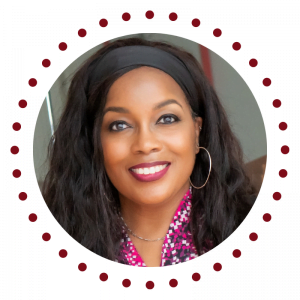
Want Karan to be Your Podcast Guest?
- Blended Workforces & the Gig Economy
- Critical Execution Tactics of High-performing Leaders
- Entrepreneurism & Leading Your Business

Want to be a Podcast Sponsor?
All sponsorships come with a featured spot on show notes pages.
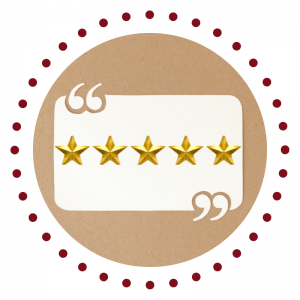
Like the Show? Please Leave a Review
If you like the show, it would mean the world to her if you left a quick review.
Your word is golden, so a HUGE thank you in advance!
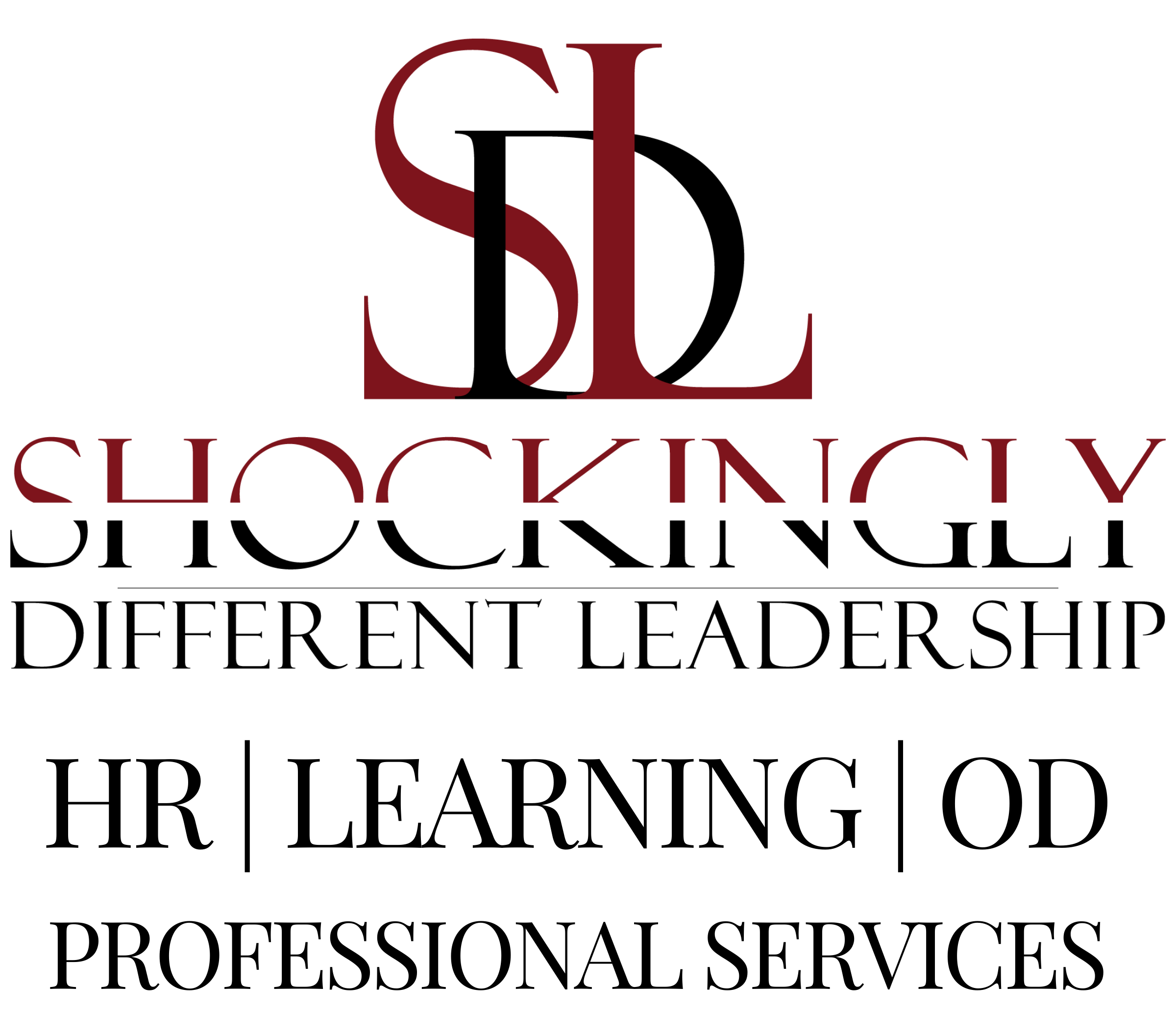
#KeepInTouch
via our podcast alerts
Subscribe now to discover why thousands of monthly listeners who are passionate about doing their best work prioritize time each week to listen to the Blended Workforces @Work podcast.
#AboutSDL
#WhereToFindUs
MAILING
4480-H South Cobb Drive
PMB 219
Smyrna, GA 30080
PHYSICAL
2121 NewMarket Parkway
Ste. 108
Marietta, GA 30067
#ContactOptions
Customer Service Email:
service@shockinglydifferent.com
Call or Text:
770-384-1103
#Office Hours
MON-FRI
8:30 AM – 6:30 PM
Weekends By Appointment

